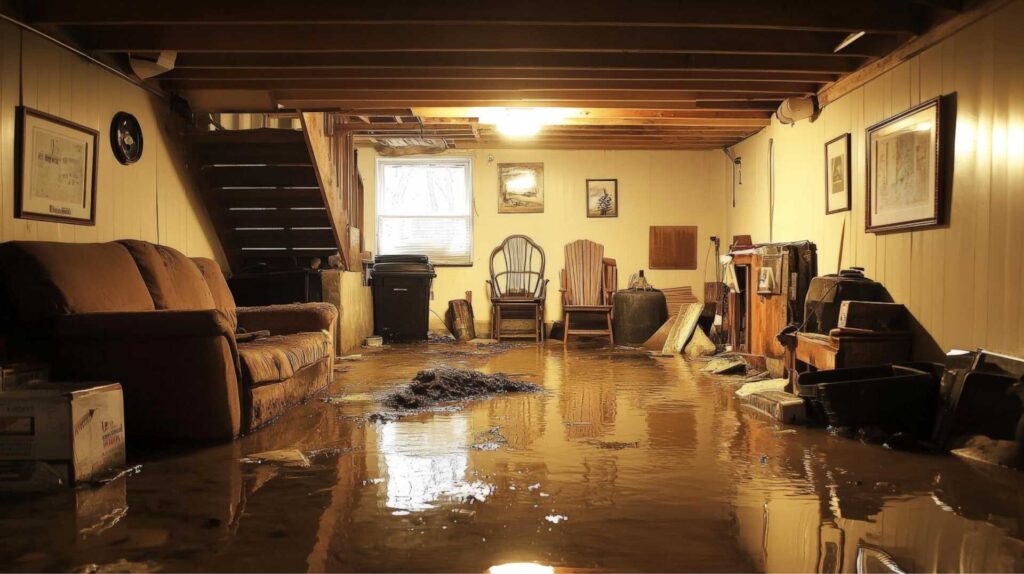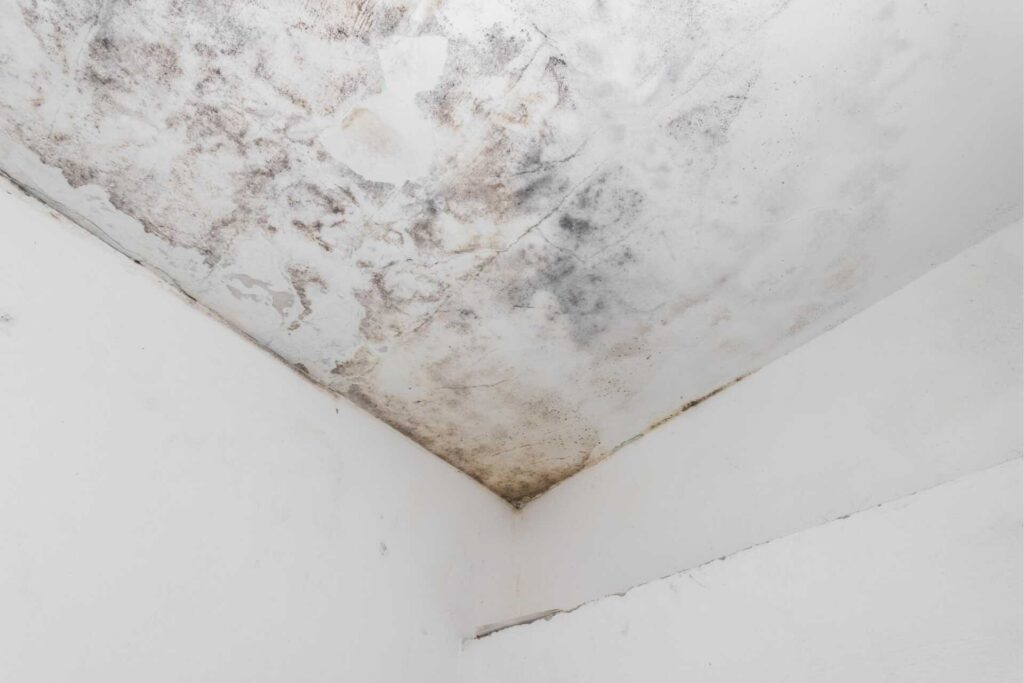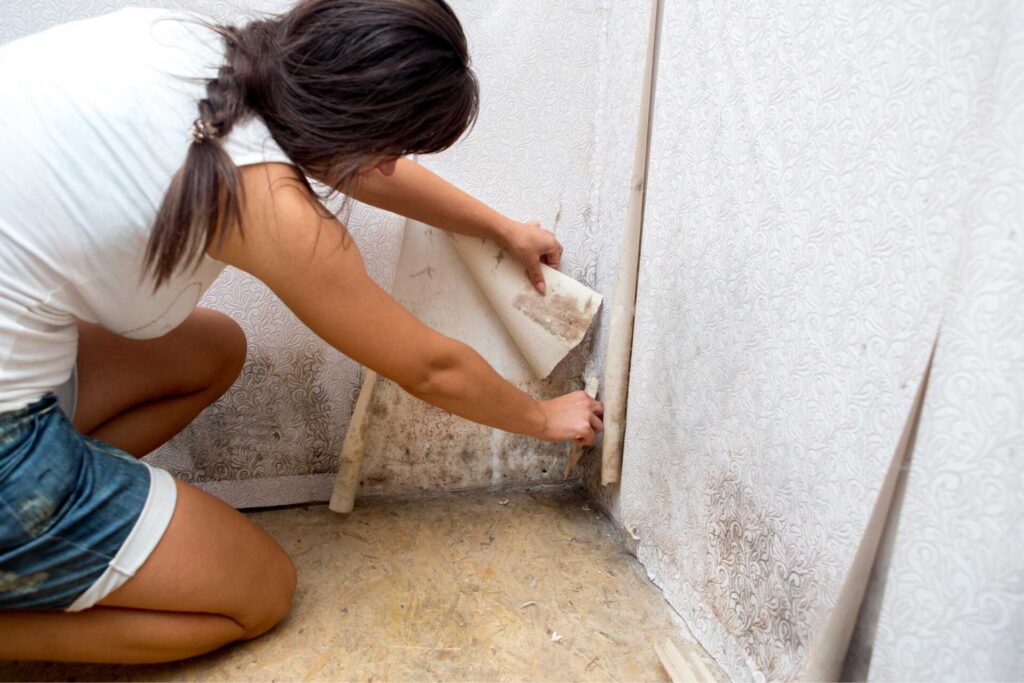
Contents
When your basement floods, it’s not just an inconvenience; it’s a potential health hazard. Mold can start growing within 24 to 48 hours in damp conditions, posing serious risks to your respiratory health. Understanding how to identify and combat toxic mold growth is essential for maintaining a safe home environment. What immediate actions should you take to protect your space and family from this hidden danger?
Key Takeaways
- Act quickly to remove standing water and dry out the basement within 24 to 48 hours to prevent toxic mold growth.
- Use protective gear when cleaning up toxic mold; even hidden mold can affect health if disturbed.
- Regularly inspect for signs of moisture, such as stains or condensation, and address issues promptly.
- Maintain proper ventilation and humidity levels between 30% and 60% to deter mold proliferation.
- Consult professional mold remediation services for extensive infestations to ensure thorough and safe removal.
Understanding the Risks of Toxic Mold Growth in Flooded Basements
When your basement floods, the clock starts ticking on mold growth, which can pose serious health risks.
Mold thrives in damp, dark environments, and your basement provides an ideal breeding ground. Within 24 to 48 hours, you may start to notice the first signs of mold, greatly increasing the likelihood of respiratory issues, allergic reactions, and other health complications.
The types of mold that develop in flooded areas can vary, but some, like black mold, are particularly toxic.
It’s vital to understand that even if you can’t see mold immediately, it can still be present behind walls or under flooring.
Factors such as temperature and humidity levels also play an important role in mold proliferation.
Identifying Signs of Mold Infestation
Recognizing the signs of mold infestation is key to addressing the problem quickly and effectively. First, pay attention to any musty odors in your basement; this often indicates mold growth.
Next, look for visible mold patches, which can appear as black, green, or white spots on walls, ceilings, or floors. You should also monitor for water stains or discoloration, as these can signal moisture issues that support mold development.
Additionally, be alert to any signs of peeling paint or wallpaper, as this can indicate underlying moisture. If you or your family members experience unexplained respiratory issues, such as coughing or sneezing, it might point to toxic mold exposure.
Trust your instincts—if something feels off, investigate further. By recognizing these signs early, you’ll create a healthier environment and prevent more extensive mold problems.
Immediate Actions to Take After a Flood
After a flood, your first priority should be safety.
Assess potential hazards in your space, then promptly remove any standing water to prevent further damage.
Once the water is cleared, dry out the affected areas to minimize the risk of toxic mold growth.
Safety First: Assess Hazards
Although flooding can create chaos, your immediate focus should be on evaluating potential hazards in your basement.
Start by checking for electrical hazards. If water has reached any outlets or appliances, don’t enter until you’ve cut off the power supply.
Next, assess structural damage; look for cracks or bowing in walls that could compromise stability.
Be cautious of hazardous materials that may have been exposed or mixed with floodwater, such as chemicals or sewage.
Mold spores can start growing within 24-48 hours, so recognize the signs of toxic mold, like a musty smell or discoloration.
Finally, ensure you wear protective gear, including gloves and masks, to safeguard your health as you navigate through these hazardous conditions.
Prioritizing safety sets the foundation for recovery.
Remove Standing Water Quickly
Act swiftly to remove standing water from your basement, as every moment counts in preventing further damage and toxic mold growth.
Begin by using a pump or wet vacuum to extract water efficiently. If the flooding is substantial, consider renting a submersible pump for quicker results. Make sure you’re wearing protective gear, including gloves and boots, to safeguard against contaminants.
Once the majority of water is gone, check for remaining pockets in corners and crevices. Use towels or mops to absorb any residual moisture.
Avoid using electrical equipment until you’re certain it’s safe. Remember, the faster you act, the better your chances of minimizing the impact on your home and health.
Don’t hesitate—time is essential in this situation.
Dry Out Affected Areas
To effectively dry out the affected areas of your basement, start by increasing ventilation as soon as you’ve removed standing water. Open windows and doors to allow fresh air to circulate, which helps reduce humidity levels.
Utilize fans and dehumidifiers to expedite the drying process; aim for a relative humidity below 60%. Inspect all surfaces for moisture, especially in hidden areas like behind walls and under flooring.
If possible, remove any wet materials, such as carpets or drywall, that can harbor mold. Monitor the area closely for signs of mold growth over the next few weeks.
Taking these immediate actions protects your home and ensures a healthier environment for you and your family.
Professional Mold Remediation Services
When faced with mold growth in a flooded basement, professional mold remediation services become essential for ensuring a safe and healthy environment.
These experts possess the necessary training and equipment to identify the extent of the toxic mold problem accurately. They utilize advanced techniques to contain the mold, preventing it from spreading further into your home.
Their thorough approach includes evaluating moisture levels, removing contaminated materials, and applying specialized treatments to eliminate mold spores. By relying on professionals, you can rest assured that the remediation process adheres to safety standards and best practices.
Additionally, these services often provide preventive measures to help you avoid future mold issues.
Investing in professional mold remediation safeguards your health and protects your property’s value. Working with trained specialists fosters a sense of security, ensuring that your home remains a safe haven for you and your loved ones.
DIY Toxic Mold Removal Techniques
When tackling mold removal yourself, it’s essential to prioritize safety by wearing protective gear like masks and gloves.
You’ll also want to use effective cleaning solutions, such as a mixture of water and vinegar or bleach, to eliminate mold effectively.
Understanding these techniques can help you manage mold issues in your basement efficiently.
Essential Safety Precautions
Although tackling toxic mold removal can feel challenging, taking essential safety precautions is crucial for both your health and the effectiveness of the job.
First, you should always wear protective gear, including gloves, goggles, and an N95 respirator mask. This helps prevent inhaling spores and protects your skin.
Next, ensure proper ventilation by opening windows and using fans to circulate air. If possible, isolate the affected area to minimize the spread of toxic mold spores.
Additionally, keep children and pets away during the process. Before you start, assess the extent of the mold growth; if it covers more than 10 square feet, consider consulting a professional.
Following these precautions will help ensure a safer, more effective mold removal experience.
Effective Cleaning Solutions
After ensuring your safety with proper precautions, you can move on to effective cleaning solutions for mold removal.
Start by mixing one cup of bleach with a gallon of water; this solution effectively kills most mold types. Apply it to affected areas using a spray bottle or sponge, making sure you cover all visible mold.
For porous materials like drywall or carpet, consider using a specialized mold removal product, as bleach may not penetrate effectively. Baking soda mixed with water can also serve as a gentle scrub for smaller patches.
Always rinse the area afterward to remove residues. Remember, thorough drying is essential to prevent mold’s return, so use fans or dehumidifiers to ensure the space is completely dry.
Preventing Future Flooding and Mold Growth
To effectively prevent future flooding and mold growth in your basement, it’s essential to assess and address the underlying causes of moisture intrusion.
Start by identifying potential problem areas in and around your home. Here are three key steps you can take:
Inspect Gutters and Downspouts: Verify they’re clear and directing water away from your foundation. Clogged gutters can lead to overflow and seepage.
Seal Cracks and Openings: Check your basement walls and floors for cracks or gaps. Use appropriate sealants to close these entry points for moisture.
Improve Drainage: Confirm the land surrounding your home slopes away from the foundation. This helps direct water flow away and reduces the risk of flooding.
Importance of Proper Ventilation and Humidity Control
Once you’ve addressed potential sources of flooding, maintaining proper ventilation and humidity control in your basement becomes crucial.
A well-ventilated space helps prevent moisture buildup, which can lead to mold growth. Use exhaust fans and dehumidifiers to regulate humidity levels, ideally keeping them between 30% and 60%.
Consider installing vents or windows to encourage airflow, especially if your basement has limited natural ventilation.
If you’re using an air conditioning system, verify it’s functioning effectively, as this can also help in controlling humidity.
Regularly check for condensation on walls and windows; this is a sign that humidity levels need attention.
By taking these steps, you create an environment that discourages mold growth, ensuring your basement remains a safe, healthy space for you and your family.
Long-Term Maintenance to Protect Your Basement
While maintaining proper ventilation and humidity control is essential, implementing long-term maintenance strategies is equally vital for protecting your basement from water damage and mold.
Regular upkeep will safeguard your space and foster a sense of belonging in your home. Here are three key strategies to take into account:
Inspect and Repair: Regularly check for leaks or cracks in walls and foundations. Address any issues promptly to prevent water infiltration.
Clean Gutters and Downspouts: Make sure your gutters are clear and that downspouts direct water away from your foundation. This helps minimize water pooling near your basement.
Install a Sump Pump: Think about installing a sump pump to remove excess water during heavy rains. This proactive measure can greatly reduce the risk of flooding.
Recap
To protect your home and health, act swiftly after a flood. Remove standing water, dry affected areas, and inspect for mold. Consider professional help if needed, and don’t overlook DIY methods for minor infestations. Prevent future issues by maintaining proper ventilation and humidity control. Stay vigilant with regular inspections and long-term maintenance. By taking these proactive steps, you’ll safeguard your basement, enhance your living environment, and ensure your family’s well-being against toxic mold growth.

